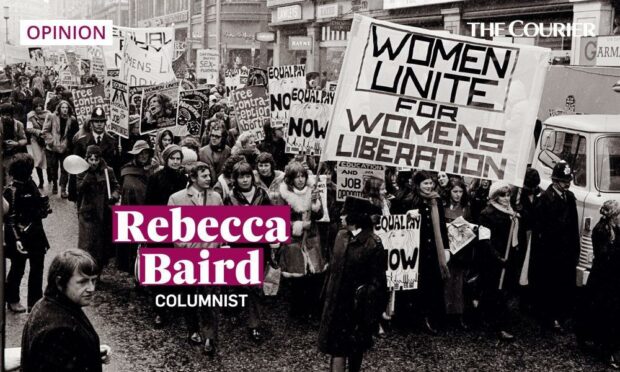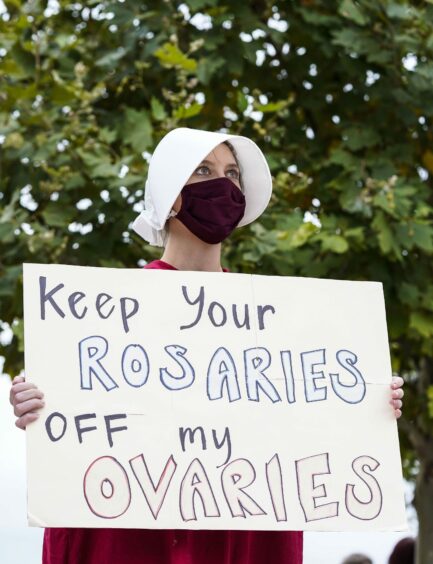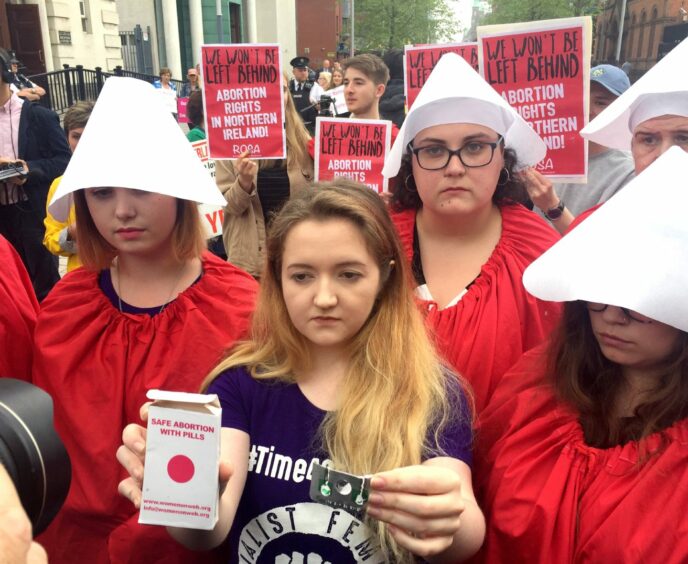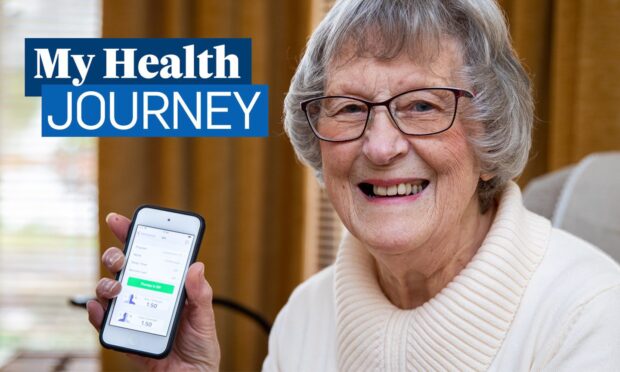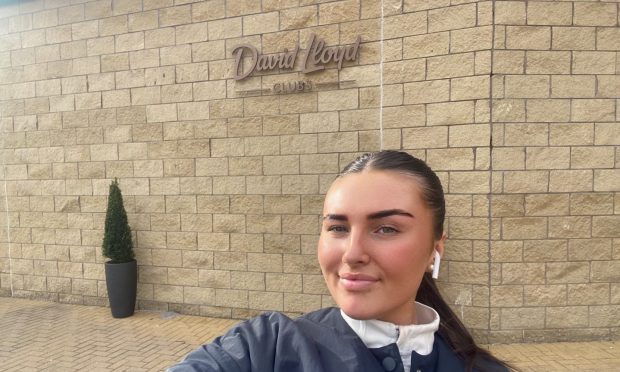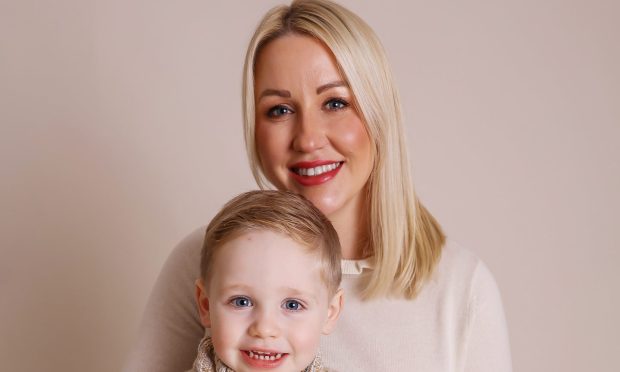If I’m ever going to be cancelled, I know exactly what it’ll be for.
I used to be ‘pro-life’.
It gives me the creeps to admit it now, but that’s what a Catholic miseducation will do to a girl.
It started with a teacher; we’ll call her Mrs C.
Mrs C was poised and put-together, beautiful and sassy. She wore pencil skirts but made it look chic and matched her little pink plastic button earrings to her lipstick. At fifteen, we all thought she was incredible.
When she asked me and some of the other shy, introverted girls if we’d like to join a fundraising club and said it would look good on our uni applications, we didn’t hesitate.
When we were told we’d be raising cash for a ‘pro-life’ charity called Life, the pitch was this: no woman should have to have an abortion because she doesn’t have the money or material possessions to support a baby.
It seemed so innocuous that I ate it up without questioning for a long time.
Longer than I’m proud of.
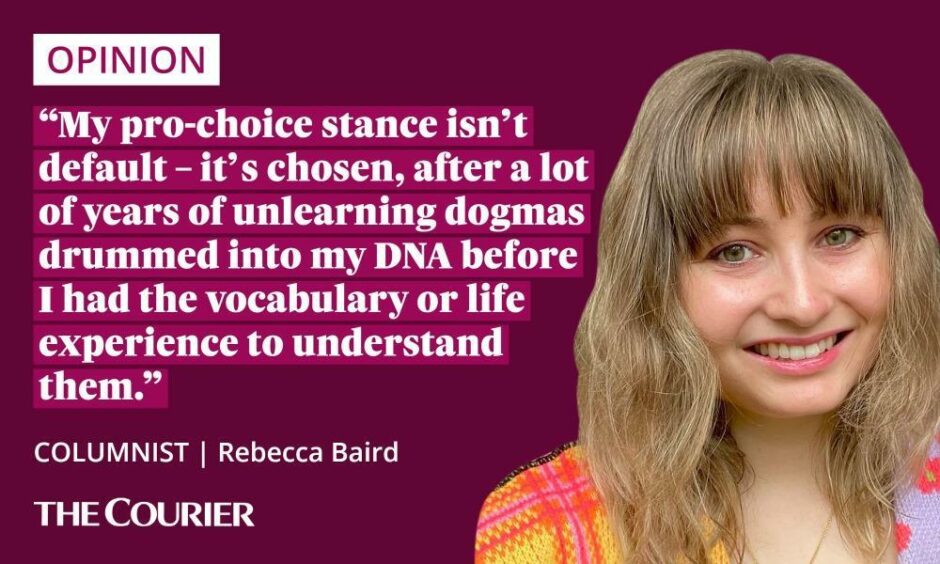
The charity itself does provide money and materials for women who don’t have what they need, so poverty isn’t a driver for abortions. On its own that’s fair enough.
But it is also a pro-life pressure group which stands against abortions altogether, as well as euthanasia and assisted suicide.
‘Pro-life’, I came to discover at 17, wasn’t pro-life at all – it was anti-choice.
This was a group that would take my own rights, my own bodily autonomy, away from me and all the other girls involved.
We were suddenly complicit in something so much bigger and more sinister than any of us had bargained for.
One of the babies born in 2020 because of Life. #lifematters #pregnancymatters #impact pic.twitter.com/F9Laq75AOi
— Life (@LifeCharity) January 29, 2021
And the day I found that out was the day I lost faith – both religiously, and in my school. But that’s for another day.
The reason I’m telling this story is to make it clear my pro-choice stance isn’t default – it’s chosen, after a lot of years of unlearning dogmas drummed into my DNA before I had the vocabulary or life experience to understand them.
It’s why, for me, the recent good news that early at-home abortions will continue to be available beyond the pandemic isn’t just a political one; it’s personal.
What are the new abortion rules?
In case you missed it, last week it was announced that the UK would continue to allow early at-home abortions, introduced due to Covid-19 restrictions, after the pandemic has passed.
Before, an early abortion (up to 10 weeks, or 11 weeks 6 days, depending on the region) could be administered by taking two pills – mifepristone, in a clinic, and then later, misoprostol, at home.
To stem the spread of Covid and still deliver essential services, it was decided the two pills could be taken at home after a telemedicine consultation with clinicians.
When it came time to decide if this emergency approach should become standard practice, the answer from service users and clinicians was a resounding YES to reduced waiting times, quicker appointments, more patient privacy, greater accessibility and patient comfort.
But as I read more about the studies which backed the new rules, I couldn’t help but think: Why has this taken so long?
And I began to see that the pro-life mentality, however outdated and outmoded, is still a real and insidious force.
Scotland purports modern healthcare – but abortion laws are still Victorian
One of my friends was unlucky enough to go through the abortion process before the at-home telemedicine process was an option.
She was a student, working nights, who couldn’t drive. And I saw her bounced from appointment to appointment, GP to clinic to hospital.
Administrative issues and her own unforgiving work schedule meant some of those appointments were delayed in those crucial early weeks, narrowing her options for a reproductive service that is supposedly all about choice.
And by the time she got through that process, she was too far along for an early medical abortion.
Red tape made the difference between her having a safe abortion in the comfort of her own home and spending a day in a hospital bed in excruciating pain.
So why did it take a global, deadly virus to drag abortions into the 21st Century?
It turns out the answer is pretty simple: Abortion is still a criminal act in the UK.
Let me explain.
Abortions are included in the 1861 Offence Against The Person Act. This is the same Act which criminalises murder and rape.
Lawmakers have not decriminalised abortions since the law was made in the Victorian era.
What they have done is create the (now 55-year-old) 1967 Abortion Act, which sets out a specific set of conditions under which doctors and service users will not be prosecuted for having or carrying out abortions.
We may have made a step in the right direction, but how can Scotland go on bragging about its unparalleled, forward-thinking health service when it continues to be governed by laws so entrenched in another century’s morality?
Surely it’s time to decriminalise abortions entirely and provide a health service worthy of the 21st Century.
REBECCA BAIRD: Why have it all when I can just have what I want?
